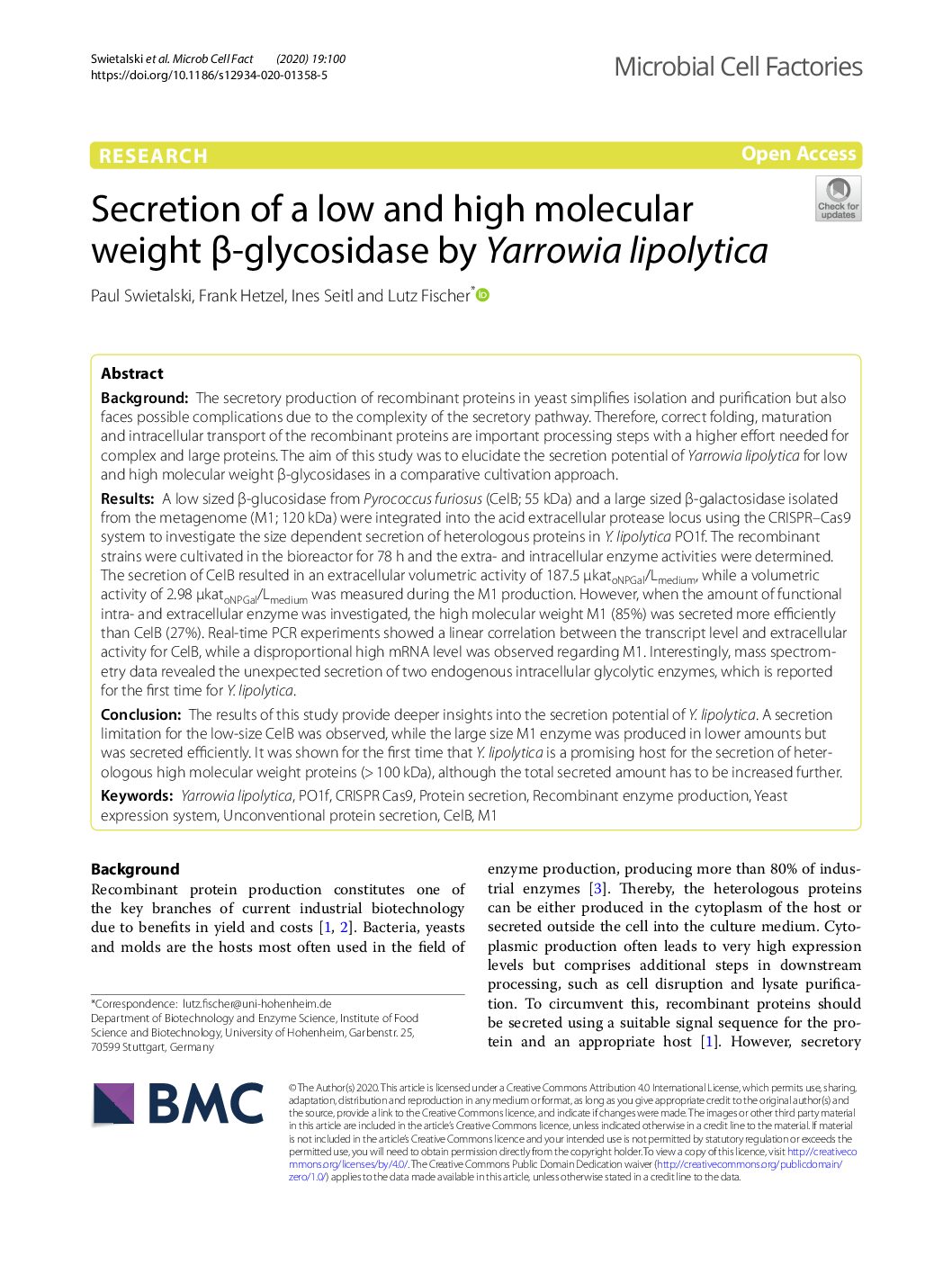White Papers that support the non-decrease of enzyme activity after disruption using constant Systems cell disruption equipment.
Abstract:
This study investigates the potential of Yarrowia lipolytica to secrete heterologous low and high molecular weight β-glycosidases, which could streamline enzyme production for industrial applications. A key research gap is the understanding of how protein size impacts secretion efficiency in this yeast species. The research aimed to determine the secretion efficiency of a low molecular weight β-glucosidase (CelB, 55 kDa) and a high molecular weight β-galactosidase (M1, 120 kDa) by integrating their genes into Y. lipolytica using CRISPR-Cas9. Both enzymes were cultivated in bioreactors, and intra- and extracellular enzyme activities were measured. The results demonstrated a higher extracellular activity for CelB; however, M1 showed greater secretion efficiency, with 85% found in the culture medium compared to CelB’s 27%. Mass spectrometry also identified the unconventional secretion of glycolytic enzymes, marking a novel finding for Y. lipolytica. This study underscores the suitability of Y. lipolytica for secreting large molecular weight proteins, but suggests further optimization is required for higher overall yield.
Conclusion on the Role of Constant Systems Cell Disruption equipment:
The Constant Systems Equipment played a crucial role in this research by enabling efficient cell disruption necessary to assess intracellular enzyme activity accurately. By applying precise mechanical disruption, the equipment facilitated the collection of intracellular proteins, which were then analyzed to compare with extracellular secretion levels, providing critical insights into the secretion efficiency of Y. lipolytica.

